
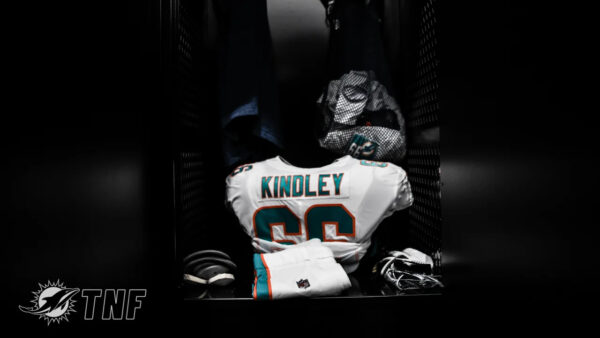
I have to offer a mea culpa to start off this piece. When the Dolphins traded up in the 4th round and selected Solomon Kindley, I was a little surprised. In my view, there was still some meat left on the bone at the guard spot in the Draft with Logan Stenberg, Kevin Dotson, Shane Lemieux, and Ben Bredeson on the board. I figured Kindley, the “Big Fish,” would be a backup as he transferred to the NFL. I was wrong. Kindley started at right guard for Miami from day one of training camp and didn’t look back.
You may remember my article from last fall entitled “Critical Mass: Protecting Tua Tagovailoa,” in which I wrote about Miami’s interior trio of Ereck Flowers, Ted Karras, and Kindley. In that article, I focused on each’s ability to pass protect. In that piece, I devised a formula to grade the impact of each player in pass-blocking. Kindley had a success rate of 79% (33 of the 42 snaps with a grade).
After seeing Kindley succeed as a rookie, particularly in the running game, I wanted to dive in and take a look at where he’s most successful. You may remember that Ereck Flowers was injured for a time last fall, and Kindley took his place in the lineup at left guard, with Jesse Davis inserting in at RG. I believe that Kindley will be a part of the Dolphins O-line for seasons to come, but I wanted to find out for myself where his best fit is – left or right guard.
To do this, I looked at four games of Kindley’s, two at each guard spot. The games at left guard are his two starts, Kansas City and the second New England game. His games at right guard are San Francisco and against the LA Rams. I chose those two games in particular because the 49ers game was the first game that Robert Hunt, a fellow rookie, started at RT and the Rams game just for fun. After all, I wanted to see how Kindley did against Aaron Donald and Michael Brockers.
To calculate some sort of “tangible,” and I use that word loosely here, the grade for Kindley at each position, I came up with the following formula that’s not too dissimilar to my pass-blocking one. The formula:
- 1 point for a run to his inside/outside gap that gains 4+ yards. (Bonus point for a pancake)
- -1 point for a run to his inside/outside gap that gains 3 or less. (Additional minus if his defender makes solo stop)
- 0 points for runs to the opposite side of the center from Kindley. (Bonus point for downfield block creating additional yardage).
I will tabulate the points and divide by the number of snaps that received a grade to see which side his run-blocking percentage is higher on, if at all. I’ll provide a few clips to demonstrate plus or minus plays and see if I can conclude where his best fit is moving forward.
Game 1: Week 5 at San Francisco 49ers
San Francisco finished 2020 with the 7th best run-defense in the NFL, giving up 106.4 yards per game. Miami hit 93 rushing yards on 32 attempts (I did not count Clayton Fejedelem’s fake punt run) in the game. Let’s look at how Kindley fared. I have four examples from the 49ers game that run the gamut of Kindley’s performance.
Kindley SF1 pic.twitter.com/jtOawK1NbO
— Kevin Dern (@KevinMD4) March 16, 2021
In this example, we see Kindley’s first step and quickness to get the second level on display. He and C Ted Karras double the 2i-technique DT, and Kindley smoothly transitions into blocking LB Fred Warner. This allows Myles Gaskin to cut to his left and fall forward for a gain of 5 yards. You’d like to see Kindley maintain contact with Warner, who can stack Kindley, but Warner cannot make the tackle. This was a positive rep for Kindley in the game.
Kindley SF2 pic.twitter.com/uRKGT4F1cE
— Kevin Dern (@KevinMD4) March 16, 2021
This is the very next play in the game after the end of the 3rd quarter. Again, we’ll see Kindley work a double-team, this time with RT Robert Hunt, against the 49ers 3-technique DT. Kindley and Hunt maintain contact and drive the defender laterally, past the point where LG Ereck Flowers was lined up on the snap, and Gaskin again can run for almost 5 yards.
These two reps showcase Kindley’s power and ability to keep his feet moving. But the next rep really showcases his movement skill.
Kindley SF3 pic.twitter.com/mxATD7W81D
— Kevin Dern (@KevinMD4) March 16, 2021
This is a wham-trap play, and we see Kindley as the pulling guard. He’s going to pull to his left and target the 49ers backside DE, our old pal, Dion Jordan. Kindley doesn’t waste any movement at the snap – no false steps – and can get in his track as this play develops quickly. Kindley can square up Dion Jordan and keep him from clogging the running lane, allowing Chandler Cox to lead Myles Gaskin through the hole and off for a 21-yard gain, the longest run of the day for Miami.
Kindley SF4 pic.twitter.com/HJuaedKu7I
— Kevin Dern (@KevinMD4) March 16, 2021
This is one of Kindley’s negative reps on the day. He’s going to lose his initial leverage against 3-technique Kentavius Street. Gaskin has an inside zone play here, and his track looks to be between Kindley and Hunt off to the right side. However, Street stalemates Kindley and drives him a step back, forcing Gaskin to cut inside for a short gain.
Overall, Miami didn’t run the ball well in this game. Fortunately, they didn’t need to with a massive lead at the half. Most of their running came at the end of the 3rd quarter and beyond to ice the game. Still, we saw some nice reps out of Kindley, and he finished this game with a 60% positive snap grade in the running game (10/15, but with a -1 bonus score). There were also 13 snaps where no grade was given (a play run away from Kindley’s side where he simply blocked a backside defender who did not affect the outcome).
Game 2: Week 8 vs. Los Angeles Rams
Under Brandon Staley, the Rams boasted the top defense in the NFL in terms of total yards and the league’s third-best run defense giving up just 91.3 yards per game. Go figure. Staley, like yours truly, is a University of Dayton alum! Okay, I get that it doesn’t matter, but I had to give some shine to my alma mater. Miami only rushed for 55 yards on 25 attempts in this game, so going into it, I didn’t expect Kindley to grade out well. Let’s look at how he did.
Using my scale, this was Kindley’s lowest graded game of the four, but only marginally. He tallied a 58% positive snap grade on run blocks with an 8/12 positive grade, with one minus bonus point. He also had 11 plays with no grade. Like the 49ers game, the Dolphins built a big halftime lead, this time mostly through the defense and special teams. So, Miami ran the ball a lot late in the game to ice the victory.
Kindley LA pic.twitter.com/ce6t2ckOIY
— Kevin Dern (@KevinMD4) March 16, 2021
In this clip against the Rams, we again see Kindley and Hunt work a double-team, this time against Michael Brockers, who is in a 4i-technique off Hunt’s inside shoulder. They’re able to keep Brockers from working to the A gap, where Gaskin takes the split-zone run. Kindley almost clears out LB Micah Kiser as well, which would have been a potential bonus point if Ted Karras hadn’t been beaten by Sebastian Joseph-Day, but the play still results in a four-yard run for Gaskin and a positive grade for Kindley.
Game 3: Week 14 vs. Kansas City Chiefs
Kindley started at left guard against Kansas City and put together a better grade than he had in the 49ers and Rams games. However, it should be noted that since Miami was down 30-10, they had to throw a lot, so there aren’t as many run-blocking reps for Kindley in this game. Still, the chance to see him potentially going against Chris Jones was too tantalizing to me to pass up. In the game, Kindley notched 6/9 positive plays and a no grade on another 6 snaps, with no bonuses, for a total of a 66% positive grade.
Kindley KC2 pic.twitter.com/BGhT3LwfCp
— Kevin Dern (@KevinMD4) March 16, 2021
I wanted to showcase two snaps of Kindley’s from this game. First, we have an inside zone run by Patrick Laird. Kindley can move Tershawn Wharton out of the backside A gap to give Laird the hole for the first down run. It’s a simple block, but it showcases what Kindley can do. He’s able to maintain contact long enough for Laird to get through the hole. If Ted Karras can get off the double-team block and scoop the inside linebacker, this play had a chance for a big gain.
Kindley KC pic.twitter.com/rp2tPzD8tO
— Kevin Dern (@KevinMD4) March 16, 2021
Okay, okay, I know that this technically counts as a pass play in the stats, but it’s still one of Kindley’s more impressive reps. He’s able to cut off Mike Pennell, who is the playside 1-technique. It shows Kindley’s quickness and his power, as Pennell is a STRONG dude. In essence, this is an outside zone run, which Jakeem Grant can cut inside between Kindley and Karras for a big gain.
These types of plays were things that guys like Ereck Flowers and Ted Karras typically struggled with. It’s why I’ve become a proponent of being able to find a way to get Kindley moved to LG soon. As I write this, it seems Miami is interested in New England C David Andrews, who would represent an upgrade over Ted Karras at the pivot. Intrigue abounds.
Game 4: Week 15 vs. New England Patriots
Kindley started at LG again against the Patriots, and Miami had a big day rushing the football, ripping off 250 yards at a 6.0ypc clip. Salvon Ahmed had 122 and Matt Breida 82 on the day, with Ahmed adding a TD run. Kindley also had his best day of work against the Pats landing a 92% positive grade, going 10/12 with one bonus and 10 no grade plays. The interesting thing is that in watching some of the negative and no grade plays, you can see how Kindley can become even more of a force for the Dolphins.
Kindley NE1 pic.twitter.com/uAfQ0sxkCb
— Kevin Dern (@KevinMD4) March 16, 2021
Here, against Byron Cowart and Tashawn Bower (I think), Kindley helps Karras to double Cowart and gets momentarily knocked back by Bower. He’s got great strength, size, and balance and can maintain his ground and not clog up the hole, and Salvon Ahmed squeaks through for three yards.
Kindley NE2 pic.twitter.com/jC81s57GFh
— Kevin Dern (@KevinMD4) March 16, 2021
In the final rep here, Kindley helps Karras to double-team Adam Butler. He peels off and nearly gets to LB Anfernee Jennings, who gets the tackle on Ahmed. I chose to showcase this play because if Kindley can improve his quickness (i.e., improve his body and get a bit more in shape), this is a play that I think he can make in 2021 that helps spring a big gain.
If there’s one thing Miami’s offense lacked in both the running and passing games last year, it was big plays, and being able to finish blocks like that one lead to opportunities for skill players to extend gains.
Conclusion
Overall, I was very impressed with what Kindley did as a fourth-round rookie, especially considering he was basically thrust into a starting role from day one of training camp (impressive!) and had no preseason games to help calibrate himself to NFL action. Based on watching the games and my grading scale, the data supports that he’d be better on the left side, as you can see in the chart below.

Troy Aikman said it best on Miami’s TNF Game against the Jaguars, and I’m paraphrasing here, but if “Kindley can get a full NFL offseason program under his belt, shed some bad weight, and get stronger, he can be a dominant guard in the league.” Consider that Troy Aikman was saying this about a rookie in his third NFL game. You can’t help but be intrigued by Kindley’s power, size, and for such a big man, his footwork. I think if he can do what Aikman said, Miami could have a Pro Bowl-caliber guard on their hands.
Until next time, FinsUp!

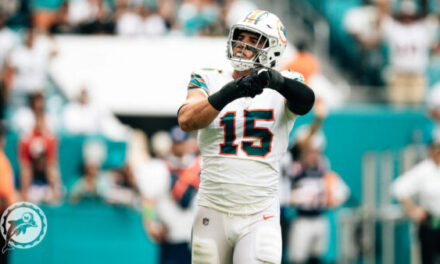
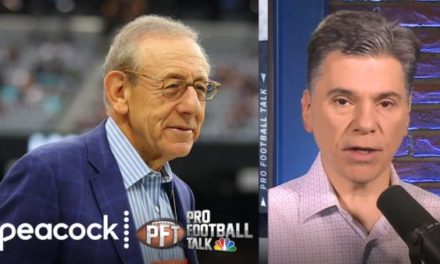
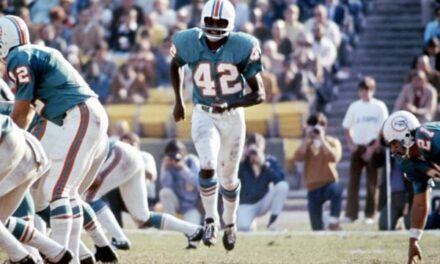






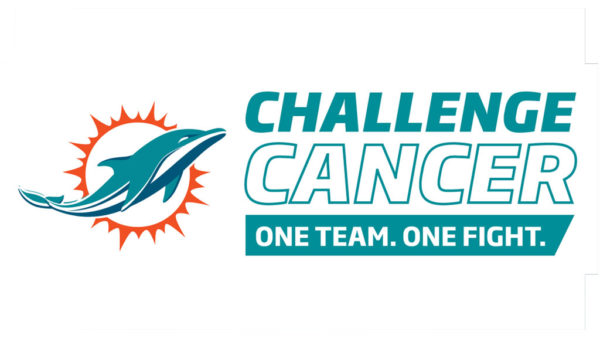



Outstanding analysis. Typically, your LG is your mobile guard who can pull. Kindley is a little on the big side, which impacts his mobility. If you have a mobile Center instead, then this compensate for your need for this.
The comparison here is Keith Sims, who was a bigger Left Guard, like Kindley, but played next to a pretty good Center in Jeff Dellenbach. I wouldn’t mind the raiders center Rodney Hudson, and seeing Kindley play next to him.
The right guard is typically your worst starting lineman; this could be a Jesse Davis or Deiter or Flowers or Hunt or Someone else. The analysis shows that Kindley is capable on the left side; I wouldn’t mind testing this out and see if he can grow into this position. I also liked Aikman’s analysis.
Great read! Love the analysis, and as much as we all try to watch each position, I find myself kind of staring at the tv screen and not just the ball in play going down to try to see the big picture. Please keep these breakdowns going! Fins Up!